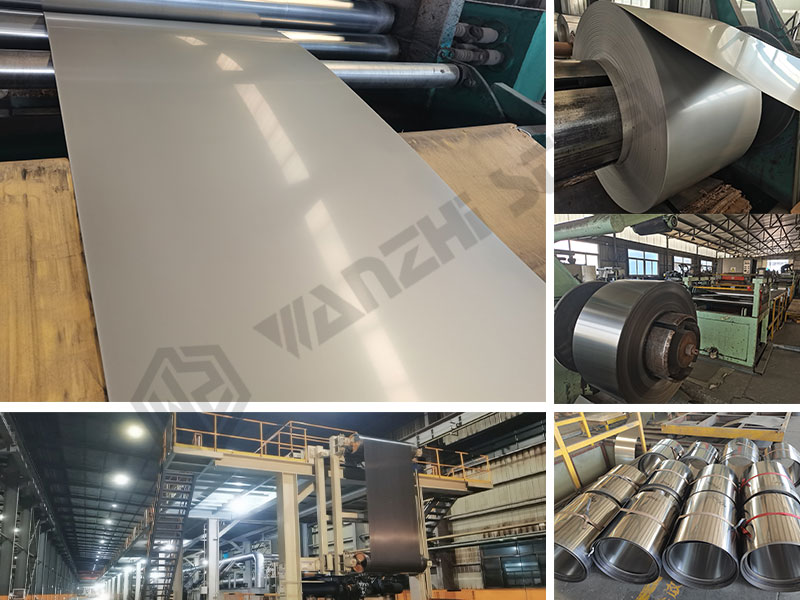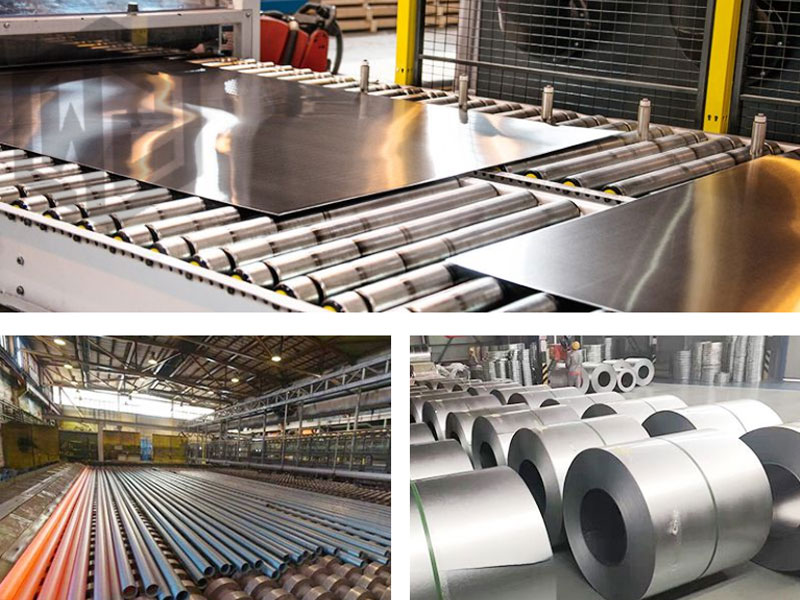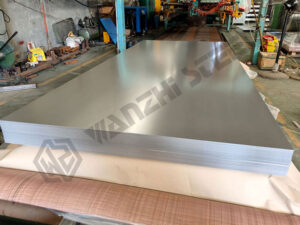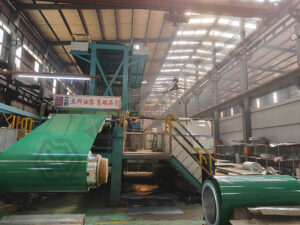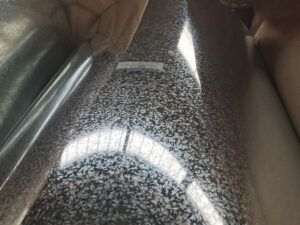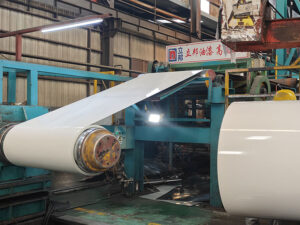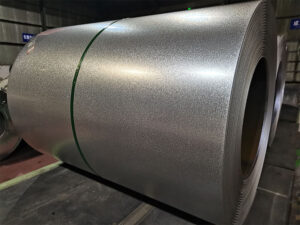304 and 316 are two widely used austenitic stainless steel, the main difference lies in the alloy composition, corrosion resistance and price. 304 stainless steel composition is relatively simple, the production cost is low, the price is economical, 316 stainless steel due to the addition of molybdenum and other precious metal elements, the production cost is higher, the price is usually higher than the 304 stainless steel by 20% -30%, but the corrosion resistance is significantly improved. Today, and Wanzhi Group together from the composition, performance, application, advantages, international standards and other aspects of a comprehensive understanding of these two materials of stainless steel it!
What is 304 Stainless Steel?
304 stainless steel is austenitic stainless steel base grade (AISI 304), containing 18-20% chromium (Cr) + 8-10.5% nickel (Ni), no molybdenum (Mo) added, 540 ℃ continuous use, a very economical and corrosion-resistant materials, smooth surface, usually silver-white with excellent formability, high temperature resistance and food grade safety.
What is 316 Stainless Steel?
316 stainless sheet is molybdenum-containing austenitic stainless steel (AISI 316) with 16-18% chromium (Cr), 10-14% nickel (Ni) and 2% molybdenum (Mo) is an upgraded version of 304, due to the presence of molybdenum, it has greater oxidation resistance, better surface finish and durability, and greater corrosion and high temperature resistance.
304 and 316 Stainless Steel Performance Differences
304 stainless steel and 316 stainless steel although belong to the same austenitic stainless steel, but the composition, physical properties and mechanical properties of the two differences.
304 and 316 Chemical Composition
| Element | 304 | 316 |
| Cr | 18.0-20.0 | 16.0-18.0 |
| Ni | 8.0-10.5 | 10.0-14.0 |
| Mo | 0 | 2.0-3.0 |
| C | ≤0.08 | ≤0.08 |
Physical Properties of 304 and 316
| Parameter | 304 | 316 |
| Density (g/cm³) | 7.93 | 7.98 |
| Coefficient of Thermal Expansion (×10⁻⁶/K) | 17.3 | 16.0 |
| Magnetic Permeability | 1.02 | 1.00 |
Mechanical properties of 304 and 316
| Property | 304 | 316 |
| Yield Strength (MPa) | 205-310 | 210-310 |
| Hardness (HB) | 170-360 | 170-360 |
| Cutting Difficulty | 100% | 120% |
How to Choose?
304 stainless steel: household kitchen utensils, general building decoration and other applications with low corrosive environment, or cost-sensitive projects, 304 stainless steel is a more economical choice.
316 stainless steel: marine equipment, chemical piping, medical equipment and other applications where the environment contains chlorides or other corrosive media, and where there is a high demand for corrosion resistance, 316 stainless steel is a more appropriate choice.
Manufacturing and Processing of 304 and 316 Stainless Steel
304 stainless steel is relatively simple in processing, welding, surface treatment, etc. 316 stainless steel has excellent corrosion resistance but is more difficult to process and requires more fine process control.
Cold Forming Process
- 304 stainless steel has excellent ductility, ultimate depth of pull ratio of 2.2, minimum bending radius 1 × plate thickness (t), rebound rate of only 12-15%, suitable for deep drawing, bending and other cold forming.
- 316 stainless steel forming than 304 stainless steel, limit depth of pull ratio of 1.8, minimum bending radius of 1.5t, rebound rate of 18-22%, the need for intermediate annealing to eliminate stress in processing.
Welding Process
- The heat input range of 304 stainless steel is wider (0.8-1.5 kJ/mm), no additional heat treatment is needed after welding, and ER308 wire can be used for welding processing, with wider process adaptability.
- The heat input range of 316 stainless steel is narrower (0.5-1.2 kJ/mm), and it is necessary to use special ER316/ER316L wire for welding processing, in addition, in order to avoid the loss of molybdenum element, the layer temperature should be controlled at ≤100℃.
Cutting
- 304 stainless steel is easy to form long chips when cutting, need to use carbide K/KM series tools and high pressure cooling to control the chips.
- 316 Stainless Steel 316 Stainless Steel is more difficult to machine than 304 Stainless Steel, and requires the use of cobalt-containing high-speed steel or cermet tools for cutting.
Cost Comparison between 304 and 316
Raw Material Cost Difference: 316 Stainless Steel has a higher raw material cost than 304 Stainless Steel due to the addition of 2-3% molybdenum and higher nickel content.
Processing Cost Difference: 304 stainless steel is easy to cut, cold form and weld, so the processing cost is lower than 316 stainless steel.
Whole life cycle cost considerations: 316 stainless steel initial cost is higher, its service life is longer under high corrosive environment, maintenance cost is lower. 304 stainless steel long-term use cost is higher than 316 stainless steel.
Similar Grades of 304 and 316
| Standard | 304 | 316 |
| China GB | 06Cr19Ni10 | 0Cr17Ni12Mo2 |
| USA ASTM | S30400 | S31600 |
| Europe EN | 1.4301 | 1.4401 |
| Japan JIS | SUS304 | SUS316 |
Material Grades of Austenitic Stainless Steel
The material grades of austenitic stainless steel are varied and commonly include 300 series, 200 series and super austenitic stainless steel.
- 300 series: 304 stainless steel, 304L stainless steel, 316 stainless steel, 316L stainless steel, 317L stainless steel, 310S stainless steel and so on.
- 200 series: manganese (Mn) instead of nickel (Ni), common 201 stainless steel, 202 stainless steel, 204 stainless steel, 205 stainless steel, 206 stainless steel and so on.
- Super austenitic stainless steel: containing 4.5% copper has higher corrosion resistance and strength, common grades are 904L, etc.
Application of 304 and 316 Stainless Steel
304 stainless steel is widely used in daily life and industry, while 316 stainless steel is widely used in highly corrosive environments.
Application of 304 Stainless Steel
Applications of 316 Stainless Steel
304 and 316 Stainless Steel Supplier
Wanzhi Group is a steel supplier from China, our factory is certified by ISO9001,ISO14001 and so on, we can provide samples and testing service, support SGS,BV and other third-party organizations for testing, our products cover all kinds of stainless steel coils, plates, strips, tubes, leave a message to tell us about your needs, please contact us for more information. Leave a message to tell us your requirements and get a free quote!
Frequently Asked Questions
Q1: Should I use 304 or 316 for coastal building railings?
316 stainless steel, coastal atmosphere Cl-about 100-500ppm, 304 stainless steel is easy to rust spots.
Q2: Does 316 need heat treatment after welding?
Yes, the thickness of > 20mm need to solid solution treatment (1050 ℃ rapid cooling), to eliminate welding stresses.
Q3:How to quickly identify 304 and 316 stainless steel?
- Chemical reagent: Mo test solution becomes red that is 316
- Spectral analysis: 1 second out of the results (accuracy ± 0.01%)
Hot Products – Wanzhi Group
300 series austenitic stainless steel is a class of austenitic stainless steel with chromium-nickel as the main alloying element, 304 stainless steel and 316 stainless steel are two common grades, which are widely used in construction, chemical industry, food processing, medical equipment, automotive, energy, household appliances and other industries. If you want to get more information about other stainless steel, welcome to leave a message to tell us!

